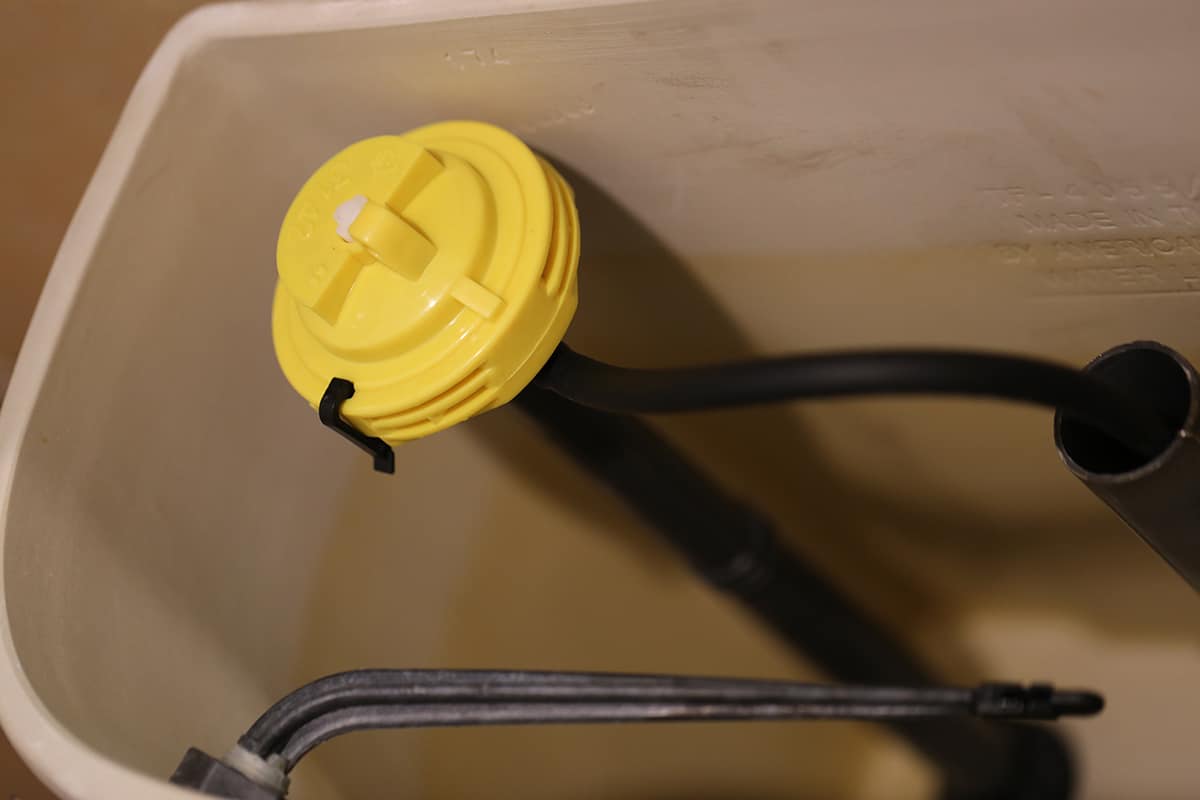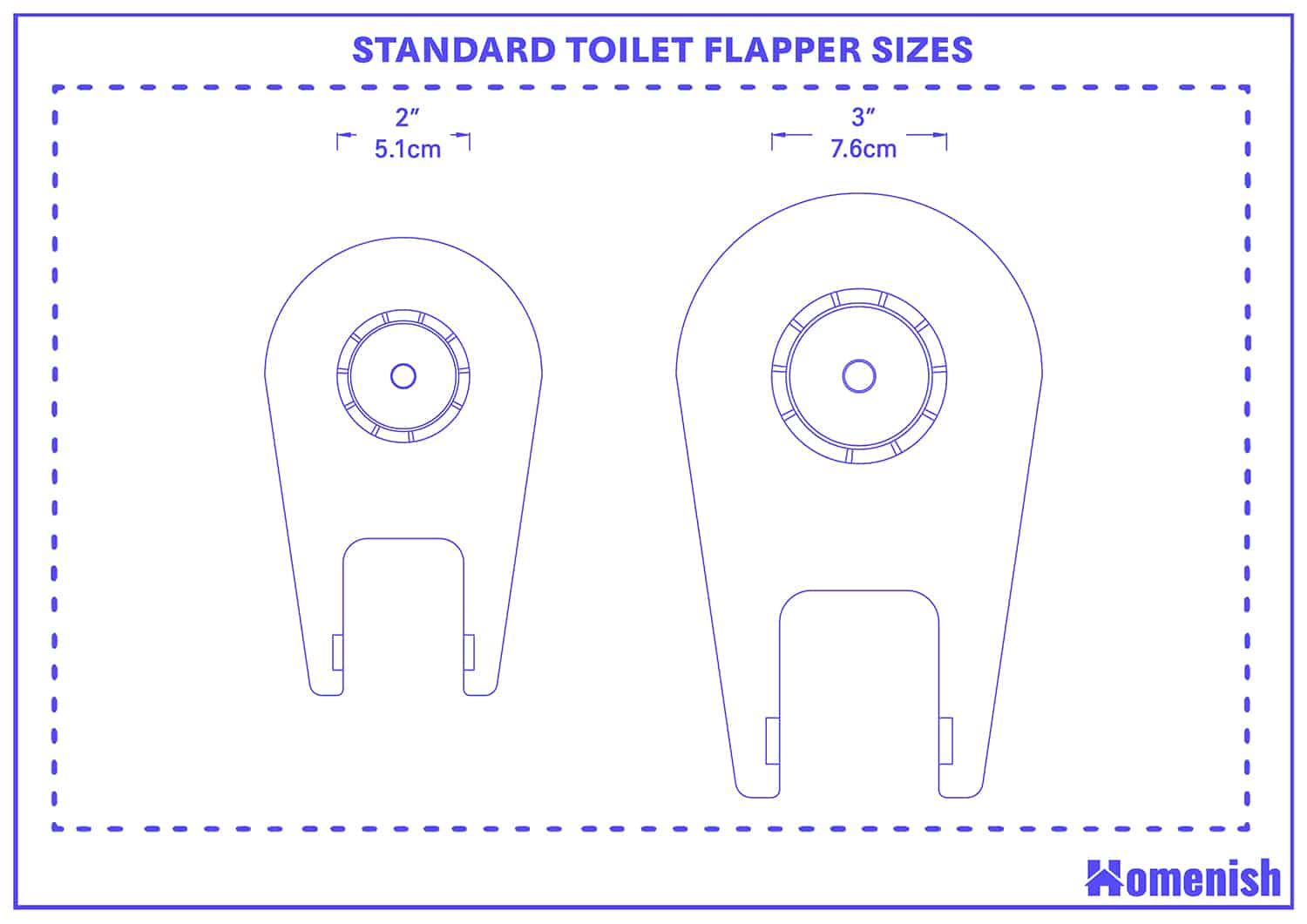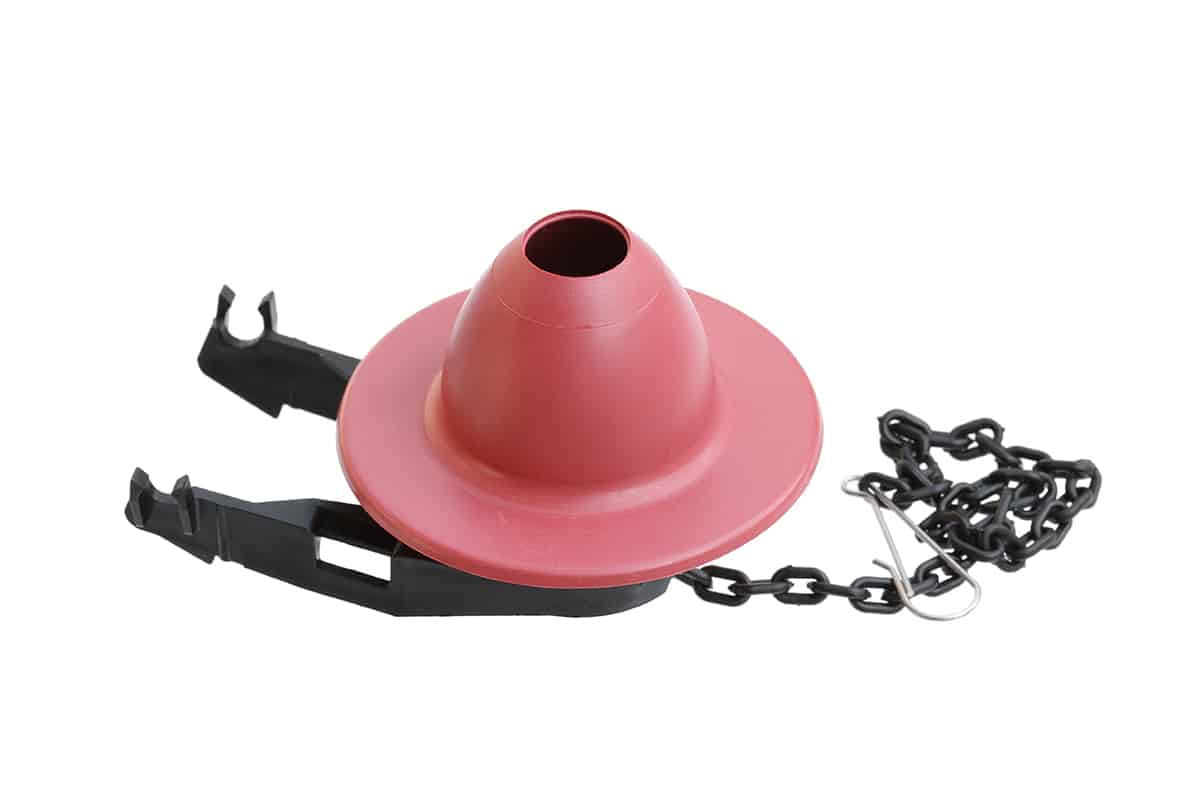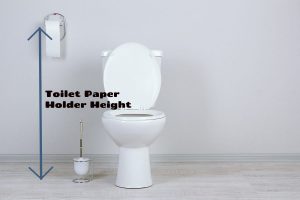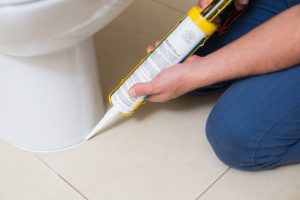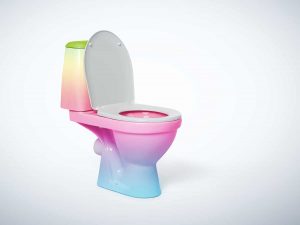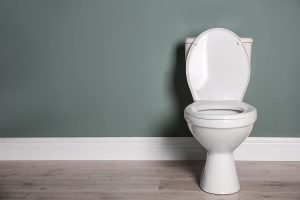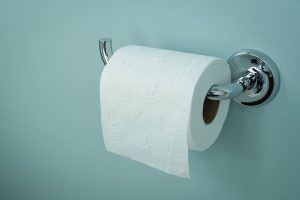A toilet flapper is a simple but very important part of a toilet, which prevents water from the toilet tank from continually flowing into the toilet bowl beneath it.
The toilet flapper itself takes the shape of a rubber stopper, which lifts up, or flaps when a toilet is flushed. This allows a set amount of water from the toilet tank to flow into the toilet bowl and flush away the contents of the bowl. When the flapper is closed, it creates a watertight seal, holding all of the water inside the tank until you flush it again.
Here we’ll discover the standard & common sizes of toilet flappers.
Toilet Flapper Sizes
Once you have established that you need a new toilet flapper, you will discover that there are two sizes available. These are the 2-inch toilet flapper and the 3-inch toilet flapper.
The 2-inch version is the most common type that the majority of households will use; however, since 2005, the use of 3-inch toilet flappers has become more popular in new model toilets.
Determining Your Toilet Flapper Size
There are a few ways you can figure out the size of the toilet flapper you need. For a visual check, open up the top of your toilet tank and look to the bottom of it where the flush valve drain opening is.
If the opening looks around the size of baseball, then the 2-inch flapper is the size you will need. If the opening looks more like the size of a softball, then the 3-inch flapper is going to be compatible.
If you are more familiar with the sizes of fruit than the sizes of sports equipment, then look at your flush valve drain opening and compare it to an orange or a grapefruit.
If it looks like the size of an orange, then you need a 2-inch flapper, but if it looks like the size of a grapefruit, then you need the 3-inch flapper. Alternatively, if you still have your old toilet flapper, which you intend to replace, you can remove it from the toilet tank and measure it.
Take the diameter measurement by measuring from one side to the other, across the middle point of the flapper. If the measurement is 3 inches, then you will need to buy a 2-inch flapper. If the measurement is 4 inches, then you will need to buy a 3-inch flapper.
Do You Need a New Flapper?
The main sign of a new toilet flapper being required is a toilet that has water constantly trickling from the toilet tank into the bowl below, even when you haven’t flushed it.
A toilet flapper is made from rubber, which is perfect for creating a good seal and ensuring it works exactly as it should at preventing water from getting through.
However, the disadvantage of rubber is that it can corrode over time. When the flapper corrodes, it will allow water to drain through when it is not needed, which can make for an annoying sound and also waste a huge amount of water. This is bad for the environment and also bad for your bank balance when you receive an expensive water bill.
It is estimated that an ineffective toilet flapper can waste hundreds of gallons of water in a single year, so this is a problem that should be resolved as quickly as possible.
Fortunately, toilet flappers are inexpensive to buy, and they can be replaced easily by the homeowner without the need for calling a plumber and facing additional costs.
If you have water continually trickling into your toilet bowl, then the issue could well be a corroded flapper, but it could also be a problem with the toilet’s flush valve.
To determine what is causing the issue, there is a simple test you can do. When the toilet tank is full, cut off the water supply to the toilet.
Use a pencil to make a mark inside the toilet tank to indicate where the water comes up to. Wait for around 15 minutes and go back to the toilet tank.
If the water level has dropped, then this is a sure sign that your problem originates with the toilet flapper, and it needs to be replaced. In most cases where a toilet is trickling water, the flapper is the culprit. If you change the flapper and it is still trickling water, then you should also replace the flush valve.
How to Change a Toilet Flapper
To change your toilet flapper, you first need to disconnect your toilet from the household water supply. Do this by locating the connection and turning the valve knob clockwise as far as it will go.
You can then empty the toilet tank by flushing the toilet, which will release the water in the tank, but it won’t fill back up since the water line is not connected.
Next, take the lid off your toilet tank and identify the flapper. It will be at the bottom of the tank in the center, and it will be connected to the flush mechanism with a nylon string or metal chain. Disconnect the flapper from the flush by unclipping it, then slide the flapper off its hinge and dispose of it.
Grab your new flapper and slide the hinge into the hinge bracket at the bottom of your toilet tank. Check the seal is secure with no gaps at all, which could allow water to leak through. Connect the new flapper to the toilet flush mechanism using the string or chain provided, the same way that the old flapper was connected.
Flush the toilet to check that the flapper is lifting and sealing as it should, and make adjustments if it doesn’t work right the first time. Now turn your water supply back on and flush the toilet, listening carefully for the sound of trickling water or the water level in the tank dropping.
If this happens, then the new flapper may not be installed correctly, and you should repeat the whole process until it is properly sealed.
